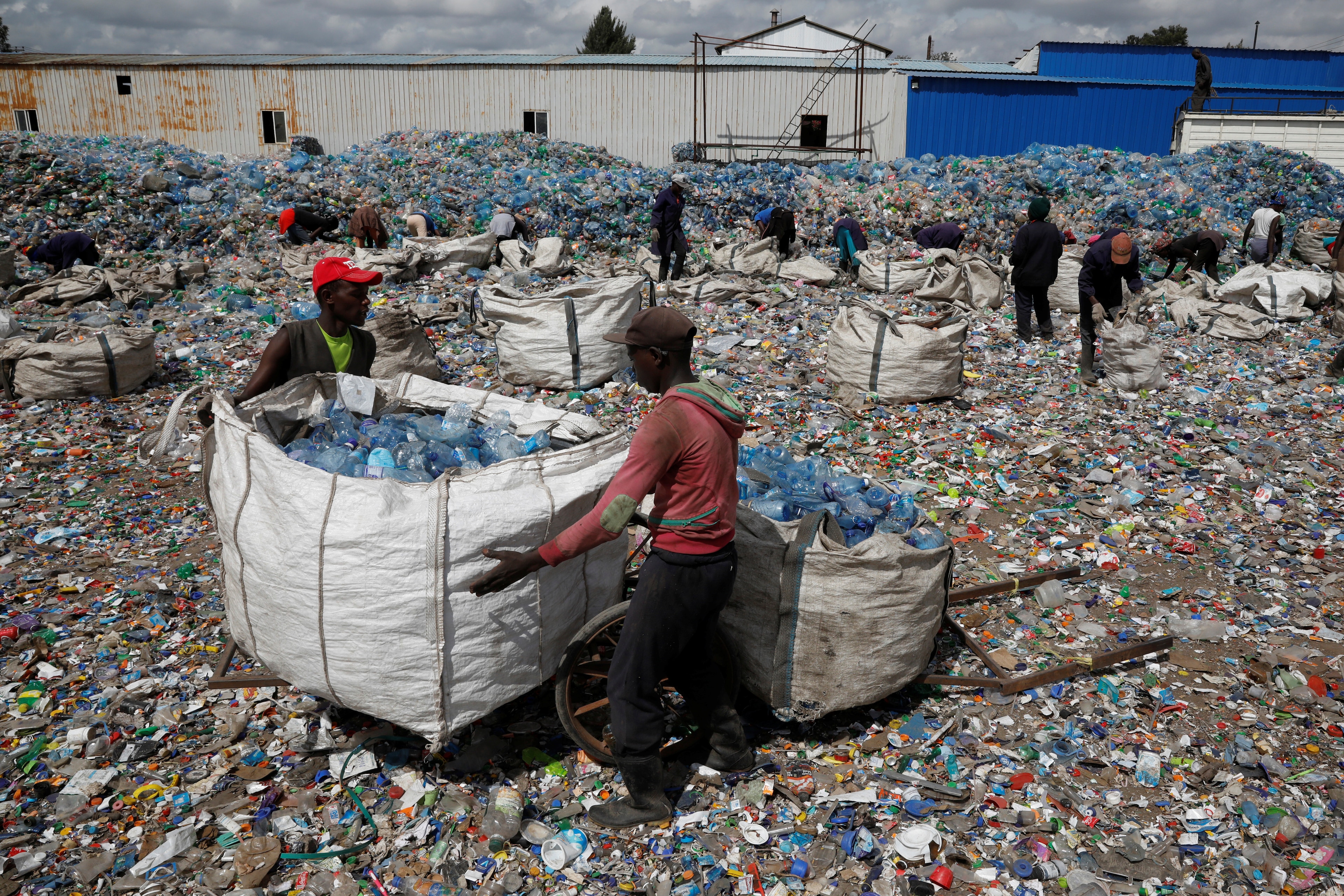Global reservoir levels decline despite construction boom, and other nature and climate stories you need to read this week

Top nature and climate change news: Global reservoir levels decline despite construction boom, and more
Image: REUTERS/Evelyn Hockstein
Listen to the article
- This weekly round-up contains the key nature and climate news from the past week.
- Top nature and climate stories: Global reservoir levels decline despite construction boom; More than 180,000 people in India and Pakistan flee cyclone Biparjoy; EU records highest ever average world temperature for early June.
1. Global reservoir levels decline despite construction boom
Water levels in the world's reservoirs fell during the last two decades, even though a construction boom increased global water storage capacity, new research shows.
Satellite data from more than 7,200 reservoirs worldwide shows a drop in water levels between 1990 and 2018, despite a 28 cubic kilometre annual storage capacity increase.
The findings of the study, published by Nature Communications, suggest new dams alone will not be enough to resolve the world's increasing water stress threat.
While climate change was identified as a "critical factor" in falling water levels, increasing water demand also contributed.
"Even if temperatures stop rising, increasing demand and new construction are likely to continue," lead author Huilin Gao of Texas A&M University, told Reuters.
The Global South saw the biggest declines in water storage levels, particularly countries in Africa and South America. This is due to a combination of rising water demand and newly constructed reservoirs failing to fill to expected levels.
Increased frequency, duration and intensity of severe droughts has brought the feasibility of large-scale reservoirs into question.
However, the International Hydropower Association said new dams and reservoirs are a crucial part of efforts to mitigate increasing climate extremes.
What’s the World Economic Forum doing about climate change?
2. More than 180,000 people in India and Pakistan flee cyclone Biparjoy
A major evacuation effort has helped hundreds of thousands of people to safety as cyclone Biparjoy made landfall in western India on 15 June.
More than 180,000 fled from the approaching category one storm, which has brought sustained winds of up to 125 kilometres per hour. So far no casualties have been reported.
The cyclone could cause tidal waves in the Arabian Sea of up to 3 metres in height, capable of inundating low-lying coastal areas of both nations, according to the India Meteorological Department.
Over 100,000 people have been evacuated from eight coastal regions in the Indian state of Gujarat, and 82,000 people from high-risk coastal areas in Pakistan, authorities report.
Temporary shelters were set up in schools and other government buildings to accommodate people displaced by the storm.

The human-induced climate crisis is increasing the frequency and intensity of extreme weather events like cyclones, with an up-to four-fold increase in reported incidents between 1970 and 2022.
3. News in brief: Other top nature and climate stories this week
EU records highest ever average world temperature for early June, as temperatures exceed previous records by a "substantial margin", Euractiv reports. This follows near-record-breaking temperature highs in May.
Fossil fuel lobbyists must identify themselves when registering to attend the United Nations (UN) COP 28 climate summit, following two weeks of UN talks in Bonn where officials set the groundwork for the upcoming climate talks.
UK band Coldplay have reduced the CO2 emissions from their latest tour by almost 50%, compared to previous tours, setting a new standard for sustainability in the music industry, Variety reports.
Fossil fuel, farming and fishing subsidies causing "environmental havoc," says the World Bank, which calls for trillions of dollars in subsidies to be repurposed to help fight climate change.
El Niño's hotter waters are responsible for mass bird deaths, say local Mexican authorities, as some 300 wild birds of different species found dead along the country's western coastal regions.
Record-breaking heatwave hits several cities in China, straining the country's electricity grid, as authorities conduct emergency drills to cope with power outages.
4. More on the nature and climate crisis on Agenda
El Niño can cause droughts, flooding and disrupt climate patterns, but how is this naturally-occurring climate pattern likely to impact weather systems around the world in 2023-2024.
Here's how oyster gardens can help build natural reefs to protect coastal communities and habitats, which are among the most affected by the worsening climate crisis.
Wildfires can affect cities even when they are thousands of miles away, causing air pollution and destroying homes, businesses and ecosystems. But what can cities do to keep forests healthy?
More needs to be done to hit clean energy goals, says the UN, as the world drifts off-track in efforts to meet SDG 7, which aims to ensure access to affordable, reliable, sustainable and modern energy for all by 2030.
Accept our marketing cookies to access this content.
These cookies are currently disabled in your browser.
Related topics:
More on Nature and BiodiversitySee all
Oliver Kade, Sarah Hadley and Judith Ketelslegers
July 28, 2025
Nasim Pour, Sebastien Cross and Joel Gould
July 28, 2025
Elena Raevskikh and Giovanna Di Mauro
July 23, 2025
Arunabha Ghosh and Jane Nelson
July 22, 2025
Sebastian Buckup and Beth Bovis
July 10, 2025






